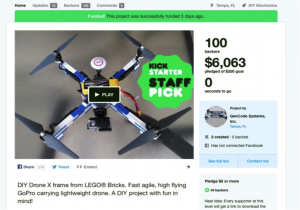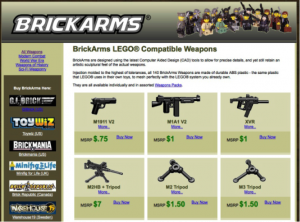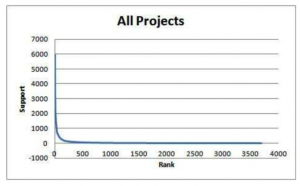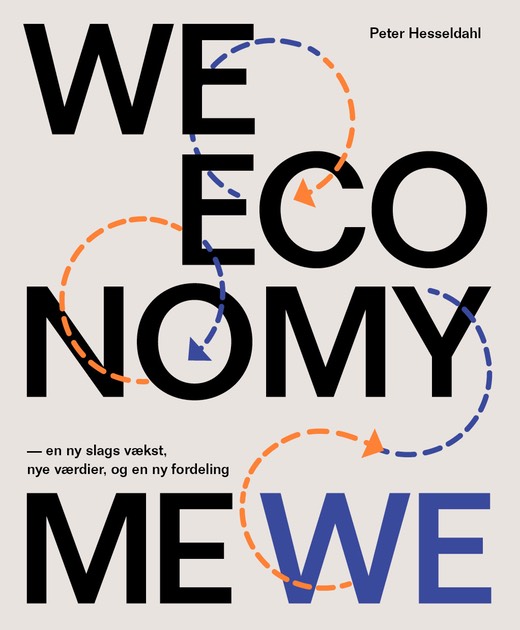Making LEGO?s greatest fans create the sets they like
The toy maker LEGO has created several platforms for involving the many passionate builders in the development of new models. Through LEGO Ideas, fans can submit ideas and if 10.000 others fans like it, LEGO will consider developing it into an official product. Users become much more engaged, and LEGO gets great ideas and knowledge of what their customers want.
The LEGO Group has realized that it is part of a larger eco-system of value creation. Over the past 15 years, the company has worked on ways to tap into the talents and ideas of users, and extracting value from the collaboration.
The most prominent example is LEGO Cuusoo ? which was recently re-named as LEGO Ideas. LEGO Ideas is an online platform, where users can propose ideas for a new set. Many users visit the site to check out the ideas, and users can support the ideas they like. Ideas that are supported be more than 10.000 people are included in a review, which takes place three times annually. Typically, in the project so far, there have been 4-8 candidates, which qualify. Of those, one or two have been selected to be developed into official products.
The inventor is matched with a designer from the company, whose job it is to ensure that the idea/project is ?translated? into a LEGO product that will satisfy the high professional quality required in an official product.
When the set is launched, the inventor receives 1% of the net sales.
The sets, which are crowdsourced from users through LEGO ideas are produced in volumes that are comparable to regular, internally developed LEGO sets, and the sales are also comparable to regular sets.
The LEGO ideas website currently has over 100.000 registered users, and 9.000 user developed projects are currently published on the site. Monthly, there is about half a million visits to the site.

LEGO Cusoo minecraft set
This case is based on interviews with:
- Tormod Askildsen, senior director in charge of Community Engagement & Events
- Bjarne Tveskov, occasional designer and consultant for the LEGO Group, contributor as a LEGO user-inventor to the LEGO Minecraft sets which are based on the LEGO Cuusoo project.
- Presentation by Troels Lange Andersen, head of community business, LEGO group, at Crowdsourcing week Copenhagen 2014.
- Slide presentation by Tim Courtney, senior consultant in LEGO new business group: http://www.slideshare.net/TimCourtney/lego-cuusoo-at-brickworld-2012
- https://ideas.lego.com
History: LEGO Mindstorms got hacked
The LEGO Group?s activities to engage and open to input from users started in earnest in 1998, when the company launched Mindstorms ? a set for building robots powered by a computerized control-unit. A month later, LEGO discovered that the proprietary operating system had been hacked and posted online, which meant that users could now start creating their own programs and develop uses of the set, which LEGO had no influence on. This was a major surprise to the company, which traditionally was tightly closed, with a culture of close control over every aspect of the LEGO experience.
However, the company realized that opening up could create a much stronger community of users and become a source of additional value ? and besides, there was not really much it could do to prevent users from hacking its code.
Since then the LEGO Group has had a range of activities to strengthen the company?s connections to the large communities of LEGO fans that exist worldwide, for instance by supporting the FIRST LEGO League robotic competition and the large LEGO fan organized Events. In the process, LEGO has realized the serious creative potential of the socalled AFOL?s; Adult Fans of LEGO.
Several ways to connect to input from users
LEGO collaborates with end-users in three different ways:
1. Through the LEGO ideas platform, users can propose an idea, or show support for the ideas of other users. Based on a set of internal criteria, the LEGO Group select among user developed projects which have received 10.000 supporters and matures and develops the selected projects in collaboration with the project creator.

2. If a LEGO development team needs input or feedback for the design process, they will sometimes contact users that are known to be especially talented builders. When the Mindstorm NXT and Evolution 3 robotic sets were developed, LEGO assembled small panels of expert users. In these cases, the goals and issues are defined by LEGO, but users are asked to contribute with their expertise.

The Mindstorms EV3 expert panel
3. To get a sense of new trends that might be important, LEGO keeps an eye on the various websites, where LEGO fans are interacting completely independently of the company. On Kickstarter, for instance, there is steady stream of new proposals for business and projects based on LEGO products. In some cases, LEGO will contact them and suggest a collaboration.


Examples of self-organized development projects related to the LEGO building system
Crowdsourced sets do as well as standard sets
The sets from the LEGO Ideas platform are performing as well in the market as comparable standard LEGO sets. So far, some of the user-designed sets have become so popular, that they are not just sold online, but through the regular retailer system.
The support from the crowd of users gives an indication of commercial viability before production. The users, which indicate support on the website also give the LEGO Group information about where they are located, how old they are, and how much they think customers would be willing to pay for the set.
Value can be collected from the periphery. Sometimes users have specialized knowledge or ideas that no one inside the company possesses. By monitoring the suggestion on the website, the LEGO Group gets a better sense of trends and changing interests among builders.
Users mobilize their communities to gather support ? thereby acting as evangelists and sales people for the LEGO Ideas projects. LEGO has spent very little to promote the LEGO Ideas site or marketing the user-designed products. However, operating the LEGO Ideas website is obviously associated with a cost.
Money is not the motivation to participate
User-inventors are paid 1% of net sales of the set they were part of creating in LEGO Ideas. However, money does not seem to be a major part of the motivation for contributing. Rather, users do it because they want the experience of interacting directly with a brand they care for.
Tormod Askildsen from the LEGO Group says: We pay the inventors out of a consideration of fairness. But for those who have the passion, it?s much more important to be recognized as creators of LEGO Ideas projects which end up as official LEGO products.
In the official LEGO products which are developed based on a LEGO Ideas project, the contributor is mentioned, sometimes very prominently, as in the case of the Dutch designer of the project which led to the LEGO Reseach Institute set.


Credit and inventor photo from the LEGO Research Institute building manual
Bjarne Tveskov, who co-invented the Cuusoo Minecraft sets, thinks that being treated with respect is the main motivation. For him, money would almost pollute the relationship. ?But to me it?s a luxury, it?s a hobby. Obviously, I can?t buy food for my familiy for the recognition I receive?.
Relation/trust
The borders between those inside and those outside the company are becoming more blurred.
There is a wide spectrum of user engagement ? a ?long tail? of users:
Although there are hundreds of thousands of users, who rank or comment on models, or upload their creations to various online galleries, the most valuable input comes from a small group of users who are extremely engaged as well as very talented in building and developing ideas. Some of these super-users may even have worked as formally employed in the LEGO Group at times. Others are so-called ?certified professionals?, that have an ongoing partnership with the LEGO Company, or they work professionally, as educators, designers or engineers using LEGO products.
At the LEGO Ideas platform, the outstanding ideas that gather support come from just a few hundred talents, and most proposals receive very little support. The vast majority of users ? several hundred thousands ? ?participate? by merely giving feedback in the form of commenting on or actively supporting projects.

Challenges
The LEGO brand is very strong, and many fans have deep emotional ties to the company and its product. Allowing users to participate ? either by submitting entire ideas or by supporting sets they like ? deepens the connection between company and users.
However, it?s important not to disappoint users, if the company starts engaging with them. Rejecting suggestions can create anger among fans, if expectation setting is not clear or is not communicated properly.
Sometimes, the suggestions from fans are very similar to projects, which are already well under way as part of LEGO?s regular internal development of new sets. In these cases, even though the suggestions get a lot of support on the LEGO Ideas site, it doesn?t make sense for LEGO to start a development based on the fan suggestion. However, this decision can be difficult to communicate clearly because the development project is confidential.
LEGO is clearly in control of the process. Unlike when the Mindstorms brick was hacked, the LEGO Ideas platform is operated by LEGO and it?s up to the company to decide whether a suggestion should be developed further or not.
Although the ideas proposed by users often are very close to the final product, the LEGO employed designer and the development teams which vets the candidate have important roles in the process ? it?s not as if the users are doing all the work:
? It must be decided whether the set and its theme fits into the style and values that the LEGO Brand stands for. For instance, the company does not produce themes using modern weapons
? The bricks used for the set must be in production.
Once a set has been chosen, it?s important to bring it to market rapidly ? within 3-6 months or so ? because the supporters are waiting for the product, or they may lose interest, if too long time passes.
Learnings
What to do
Respect contributors, give them credit, money is not an important motivation.
Integrate user efforts into the company?s normal procedures for development
A few users are talented and expert, but most users will just provide simple feedback, such as comments and voting for an idea.
What to avoid
Don?t ask for users? suggestions if you are not able to use them.
Don?t create expectations of involvement that you are not able to fulfill
Crowdsourcing should not be a separate activity
It?s important to have a systematic internal infrastructure for receiving ideas, channeling them to the right department and keeping users informed.
It is very deliberate strategy, that the LEGO Group has not created a separate department for developing user-generated products. In order to be an integrated part of the entire organization, it?s crucial for the LEGO Ideas project to follow the existing lines of operations, which have been developed over many years.
Often, companies will place project that challenge the existing procedures outside the main operations. But such projects tend to last only a few years, because they are not able to interact and prove useful for rest of the company.
